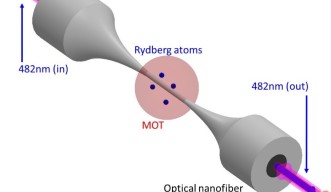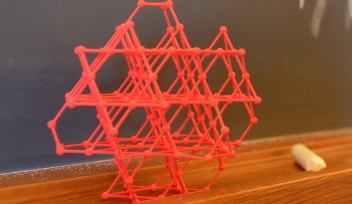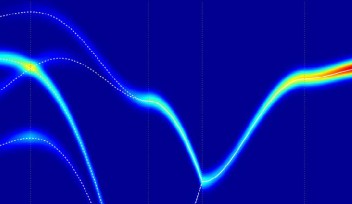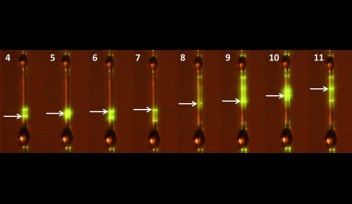Exciting apparatus helps atoms see the light

Researchers in the Light-Matter Interactions for Quantum Technologies Unit at the Okinawa Institute of Science and Technology Graduate University (OIST) have generated Rydberg atoms – unusually large excited atoms – near nanometer-thin optical fibers. Their findings, published recently in Physical Review Research, mark progress toward a new platform for quantum information processing, which has the potential to revolutionize material and drug discoveries and provide more secure quantum communication.
Due to their extraordinary susceptibility to electric and magnetic fields, Rydberg atoms have long piqued physicists’ interests. Used in conjunction with optical nanofibers, these hyper-sensitive atoms could play an instrumental role in new types of scalable quantum devices. However, Rydberg atoms are notably difficult to control.
“The main aim of the study was to bring Rydberg atoms into proximity with the nanofibers,” said Krishnapriya Subramonian Rajasree, a PhD student at OIST and the first author of the study. “This set-up creates a new system for studying interactions between Rydberg atoms and nanofiber surfaces.”
Unusual atoms
To carry out their research, the scientists used a device called a magneto-optical trap to capture a cluster of Rubidium (Rb) atoms. They reduced the temperature of the atoms to approximately 120 microKelvin – fractions of a degree above absolute zero and ran a nanofiber through the atom cloud.
Then, the scientists excited the Rb atoms to a more energetic Rydberg state, using a 482 nm beam of light traveling through the nanofiber. These Rydberg atoms, which formed around the nanofiber surface, are greater in size than their ordinary counterparts. When the atoms’ electrons gained energy, they moved further from the atomic nucleus, creating larger atoms. This unusual size heightens the atoms’ sensitivity to their environment and to the presence of other Rydberg atoms.
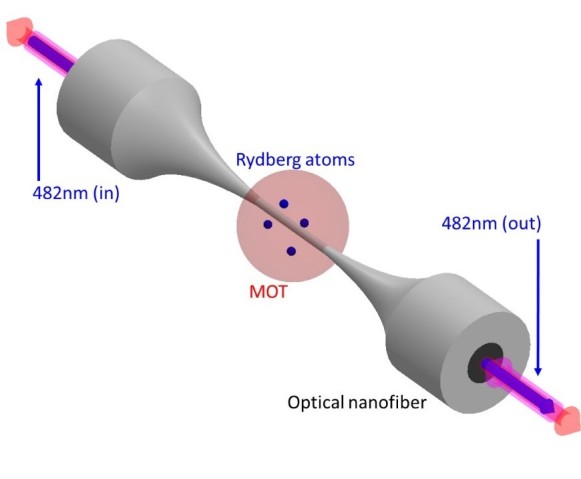
Through their experiment, the scientists brought the Rydberg atoms within mere nanometers of the optical nanofiber, enabling increased interaction between the atoms and light travelling in the nanofiber. Due to their abnormal properties, the Rydberg atoms escaped the magneto-optical trap. The scientists were able to understand aspects of Rydberg atom behavior by examining how the loss of atoms depended on the power and wavelength of the light.
The ability to use light travelling in an optical nanofiber to excite and then control Rydberg atoms may help pave the way toward methods of quantum communication, while also heralding incremental progress toward quantum computing, the scientists said.
“Understanding interactions between light and Rydberg atoms is crucial,” said Dr. Jesse Everett, a post-doctoral scholar at OIST and a co-author of the study. “Harnessing these atoms could enable the secure routing of communication signals using very small amounts of light.”
Moving forward, the researchers hope to further study properties of the Rydberg atoms in conjunction with optical nanofibers. In future studies, they intend to look at Rydberg atoms that are even bigger in size, to explore the possibilities and limits of this system.
Research Unit
For press enquiries:
Press Inquiry Form










